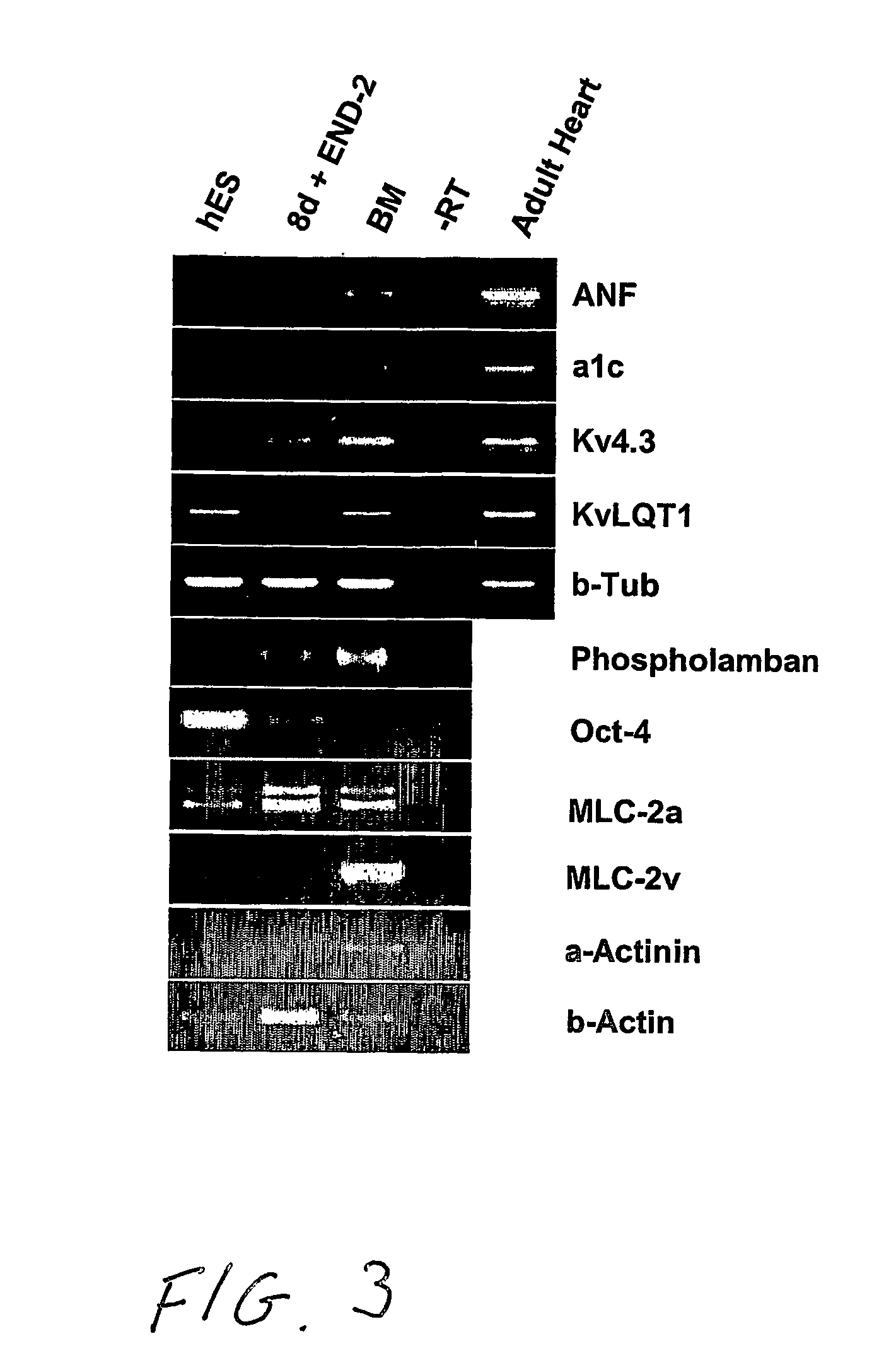Differentiation of human embryonic stem cells to cardiomyocytes
a technology cardiomyocytes, applied in the field of human embryonic stem cells, can solve the problems of wide spread of cell death and loss of function
- Summary
- Abstract
- Description
- Claims
- Application Information
AI Technical Summary
Benefits of technology
Problems solved by technology
Method used
Image
Examples
Embodiment Construction
[0006] Human embryonic stem cells co-cultured with mouse visceral endoderm (VE)-like cells form beating muscle cells, expressing cardiac specific sarcomeric proteins and ion channels. Direct comparison of electrophysiological responses demonstrated that the majority resembled human fetal ventricular cells in culture; a minority had an atrial phenotype. Both fetal and hES-derived cardiomyocytes in culture were functionally coupled through gap junctions. This is the first demonstration of induction of cardiomyocyte differentiation in hES cells that do not undergo cardiogenesis spontaneously.
[0007] Here, we demonstrate that co-culture of pluripotent hES cell lines with END-2 cells induces extensive differentiation to two distinctive cell types from different lineages. One is epithelial and forms large cystic structures staining positively for alpha-fetoprotein and is presumably extraembryonic visceral endoderm; the others are grouped in areas of high local density and beat spontaneous...
PUM
 Login to View More
Login to View More Abstract
Description
Claims
Application Information
 Login to View More
Login to View More - R&D
- Intellectual Property
- Life Sciences
- Materials
- Tech Scout
- Unparalleled Data Quality
- Higher Quality Content
- 60% Fewer Hallucinations
Browse by: Latest US Patents, China's latest patents, Technical Efficacy Thesaurus, Application Domain, Technology Topic, Popular Technical Reports.
© 2025 PatSnap. All rights reserved.Legal|Privacy policy|Modern Slavery Act Transparency Statement|Sitemap|About US| Contact US: help@patsnap.com



